
Your Top 7 Questions Answered About Team Retreats
Your life is a spinning circus. The bank website wouldn’t let you log in this morning, you lost an hour on the phone troubleshooting the new CRM, and a colleague from way back emailed to say they just saw your teenager on YouTube streaming political commentary under his own name (and therefore yours).
Oh, and your director group just informed you that the culture is flagging now that everybody’s working from home three days a week. And your star performer—the one you can always count on—gave their notice last week.
It’s like a Choose Your Own Adventure, except you never finish, you never die…and you’ve brought your whole team along for the ride.
Might as well start right there, with how to knit your people tighter. Because we’re all pretty clear by now: your culture is determining what you’re capable of.
* * *
The way teams function is undergoing an overhaul.
Two years of social distancing has changed the way we work. This shift has delivered some good things: less commuting; fewer emissions; hybrid workflows that often improve life balance.
It has also left some teams floundering. Leaders are wondering, How do we foster meaningful relationships and enable productive teamwork in this new territory? How do we build a healthy work culture in 2022?
It feels like we’ve gone from COVID pivots to the brink of burnout, and now we’ve landed in this grey area where we haven’t quite recovered from what came before…and we aren’t quite sure what lies ahead. Even with restrictions lifting and people returning to the office, we know we are still missing real connections.
The custom retreats we’ve been receiving inquiries about include clients asking about time in nature together, having long meals together, being somewhere special together, and celebrating the fact that they get to do their unique brand of work together.
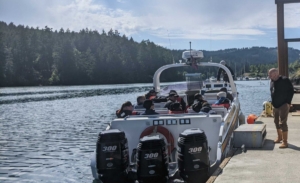
Here’s what people are asking us:
QUESTION #1
Why does my team need a retreat?
Short answer: everything in org functioning comes down to relationships.
Every door that opens, every goal you achieve, every customer you acquire, assist, retain or fumble…your organization’s success comes down to the quality of your relationships. How far will people go for you? How hard will you play for them? How hard will they play for you?
Relatedness (whether people work well together) is a key element of high-performing teams. It’s the one that challenges leaders most—but it’s the biggest lever for culture.
The casual connections of the workplace we once knew are no more. Teams are dispersed. People are living inside a whole new layer of stress. New teams struggle to know each other on a personal level. People feel disconnected from a sense of purpose and belonging. Trust is at an all-time low. And change—especially the relentless, slap-you-in-the-face kind that just keeps coming—is hard.
Teams need time to reengage with one another as humans, not just as people connected by a common workplace. They need to build trust and psychological safety. They need to see each other as people first, colleagues second. Only then can people shift their focus to things like annual targets, strategic goals or their leadership practices.
Plus, taking your team away makes people feel valued. And research shows that recognition is often a more powerful motivator than money.
What’s extra great is that with a Roy Group team retreat, you build relationship skills at the same time that you’re building the relationships themselves.
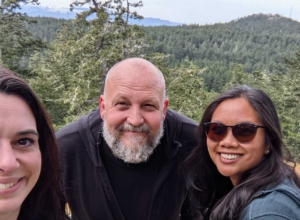
QUESTION #2
What does a typical day of a team retreat look like?
Whatever you want it to look like. Generally, a well-rounded day together involves some “me” time on an individual level, time together and alone in nature, three excellent meals, a group activity where we go off somewhere to feast or explore, and a structured session where you drill down on something that’s important to your roadmap forward.
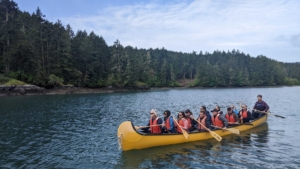
Maybe you’ll want to build in a complete program like Focus on Self, which is well suited to the greater sense of openness that a retreat brings. Or you might dive into how to strengthen alignment with The Collaborative Team. Or learn tools for putting ego aside and seeing others’ perspectives with Engaging Difficult Conversations. Endless options.
QUESTION #3
How will my team or organization be different afterward?
Imagine having an opportunity to talk together, authentically and unscripted, about your culture. To see each other as people outside of a work setting. Outside of roles, pressures and deadlines.
In a retreat setting, there’s so much more space for intuition, nonverbal communication, play and shared experiences. It’s like a jazz jam compared to a solo.
It’s astonishing how quickly people can ideate creative solutions to problems that seemed intractable under the fluorescent lights of the office. Astonishing how easy it is to find alignment when everybody really gets what you’re working toward together.
Before a team retreat, your people could be grappling as individuals without tools and skills, or the knowledge of how to use them effectively. You lack a common language, and a set of common experiences.
After a team retreat, your vision is suddenly clearer, your objectives seem somehow reachable, and your people feel refreshed and valued. They’ve honed their focus, dug deeper to understand how their roles and responsibilities contribute to excellent performance, and have a better understanding of who else on their team they can turn to for support. You can see the makings of a high-performing team.
They’ve learned to play together—for each other.
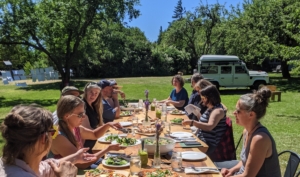
QUESTION #4
What are some specific things a retreat can dig into?
- Articulating what you’re truly struggling with.
- Strategy, team composition, new workflows.
- Deciding which business lines to let go of.
- Coming to grips with change, and building tools to navigate it—two different things.
- Refining or reassessing your organization’s purpose.
- Taking steps together toward the things the team feels are truly important.
- Taking stock and choosing a heading.
This last bit is especially important. It’s easy for people to get completely fired up during a retreat…and then lose track of the pieces after returning to the office. We can help you close out the process by developing a roadmap or custom-shaping you a Roy Group pathway, where we build in an accountability structure to make sure you stay the course.

QUESTION #5
How can we afford to pay for a retreat?
Organizational advisor David Baker has a good answer for this. (His emails are great. You should get on his list.)
“Set aside that rent money for culture building,” he writes. “If you go remote-first, that doesn’t mean you automatically eliminate the big “Rent” line item from your Income Statement. A good chunk of that should most likely be reserved for in-person teambuilding, whether that’s a big annual retreat or more regular in-person gatherings.”
Our practice leads can work with your organization to find the sweet spot between your fiscal realities and…well, limitless possibilities.
QUESTION #6
What makes now the right time to consider a team retreat?
The last couple years have been hard as hell on most of us. But even hard things demand closure—a grieving of sorts.
We need to acknowledge that we have been through something—that we’ve suffered and prevailed, and that we are each warriors in our own right. We need to engage Henderson’s Disciplines by pausing, reflecting and inquiring, before we can embrace the next chapter of action.
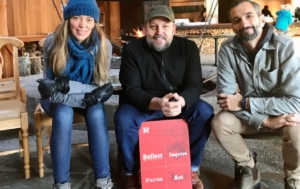
Now is the time to come together and reflect on these last two years. What went well? What was tricky? What do we need to do differently?
QUESTION #7
Where would we do a retreat?
That depends on your budget and the activities you want to engage in. One of our Alberta clients, for example, recently came for a retreat on Roy Group home turf, so we built in coastal exploration in voyageur canoes and whale-watching. We had small groups working in the forest, on the docks, and on the grass at the ocean’s edge. Retreaters shared exceptional meals together, learned from a local First Nation, and bedded down in the oceanfront comfort of the Oak Bay Beach Hotel.
We have hosted our own team retreats at Bilston Creek Farm…
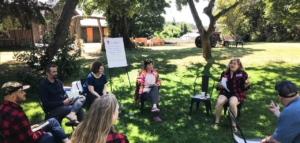
…and we share a longstanding partnership with Nimmo Bay Wilderness Resort, where our exquisite experiences will have your team talking in the staff room for decades to come.
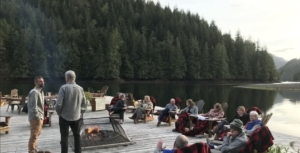
* * *
If you’ve been thinking about a team retreat to help bring your people together, reset, and choose a fresh heading filled with purpose, drop us a note. We are booking into the fall—and we’d love to work (and play, and feast, and plan) with you.
